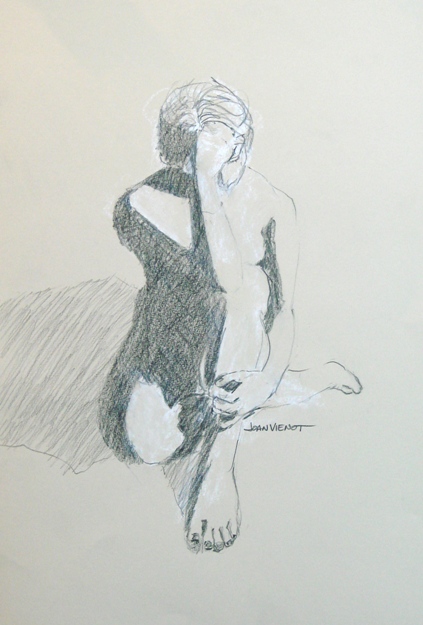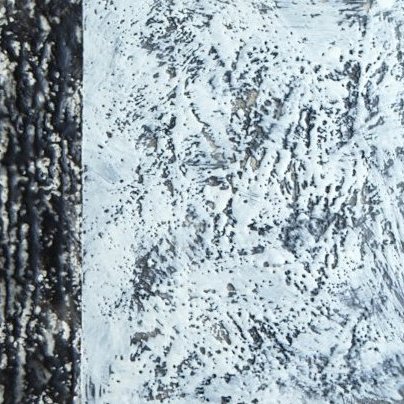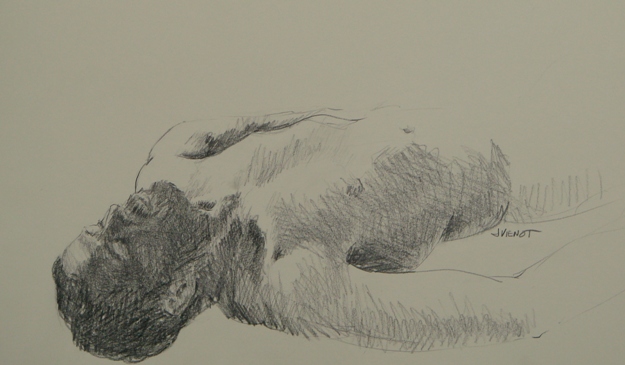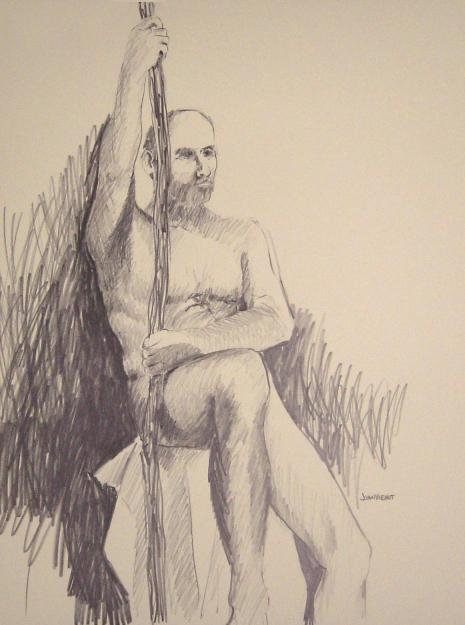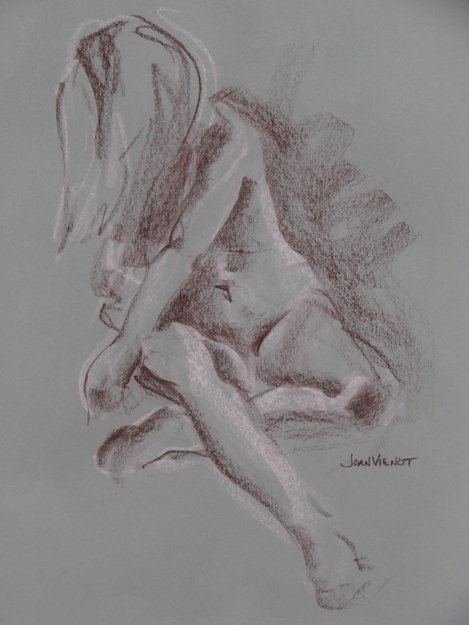It is different when working in a studio setting with other artists, as opposed to working by myself in my own home studio. There is no doubt that sometimes being alone is the best way to get work done. But the comaraderie of being with other artists, all working under the same conditions, provides an energy and inspiration that helps me to go farther and do more in a shorter period of time than I ever would working alone.
That certainly was the case at the figure drawing session at Studio b. this week. I was struggling, and would have quit halfway through the session if I was drawing alone. Each pose presented new challenges for me, mostly because the model was standing or sitting on a swing by the pool, requiring each pose to fit within a geometric space bordered by the swing and the ropes.
I think that all of the drawings that I did have potential, but I don’t feel that I did justice to the model’s beauty and fitness. Yet there is an expressive quality to each that I recognize as true.
I have decided that even though I love the texture, I don’t like charcoal paper because it wrinkles and dents very easily. So I intend to use my stock of charcoal paper for warm-up drawings and gestures. The first drawing is on black charcoal paper. The rest are on Stonehenge paper, which is heavy enough that it can take quite a bit of handling without wrinkling.
 |
 |
 |
 |
Most of my images are available for purchase. Contact me if you are interested. — Joan Vienot




